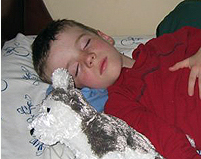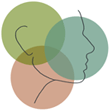
Sleep and Snoring Diagnosis and Treatments
Snoring is produced as air passes through areas of resistance in the upper airway during sleep. Most commonly, the soft palate, uvula, tonsils and back of tongue are the areas that may contribute to the sounds of snoring. It is not uncommon for children to experience some degree of sleep apnea from enlarged tonsils and adenoids. Muscles that surround the throat provide adequate support to these areas when we are awake. However, during sleep, the throat muscles become relaxed and air no longer passes as freely through the mouth and throat. In certain instances, nasal blockage may also be a factor. A problem arises if the snoring interferes with the rest of a partner. However, we are more concerned if the snoring disturbs the quality of sleep of the person producing the unwelcome sounds. During a deeper cycle of sleep, the relaxation and increased resistance may result in less air passing into our lungs and therefore less oxygen entering our circulation. The brain will compensate with a partial awakening of our sleeper, gasping for air. As this cycle repeats itself through the night, there is a disruptive pattern of sleep. Feeling tired or fatigued during the day on an ongoing basis may be the result, one of the cardinal symptoms of what is known as "sleep apnea".  There may be a desire to nap during the day. More important, the constant feeling of being tired and therefore being less alert, may affect job performance and driving skills. There may be lapses in memory and concentration. Lack of quality sleep may also result in irritability and headache. Ultimately, depending on related risk factors such as obesity, the untreated patient may eventually develop high blood pressure, cardiovascular events and even a stroke. In this context, the snoring becomes an important medical issue.
There may be a desire to nap during the day. More important, the constant feeling of being tired and therefore being less alert, may affect job performance and driving skills. There may be lapses in memory and concentration. Lack of quality sleep may also result in irritability and headache. Ultimately, depending on related risk factors such as obesity, the untreated patient may eventually develop high blood pressure, cardiovascular events and even a stroke. In this context, the snoring becomes an important medical issue.
Your physician would like to know how long you have snored; if you have gained an appreciable amount of weight and over what period of time. However, sleep apnea also occurs in people who are not over weight but have other features of their anatomy that contribute to the problem. Related medical problems, such as an under active thyroid gland, high blood pressure, or diabetes will also be of concern to your physician. Do you have the desire to take a nap while at work or do you fall asleep very quickly in that comfortable chair? If possible, a bed partner may be able to provide valuable information as well. Do you snore in any position? Are there times during the night when there are no sounds of breathing heard? Are you a restless sleeper?
The configuration of your face and neck will be noted; the position and size of your tongue upon opening your mouth is also important; are tonsils present and are they unusually large; the length and thickness of you soft palate and uvula; and are you able to breathe through both sides of your nose. It may be necessary to pass a flexible scope through your nose in order to visualize the back of your tongue and your lower throat in a sitting and a reclining position.
In order to determine what occurs while you are asleep, your physician will order a Sleep Study, also known as a polysomnogram. Although there are times when this study may be performed in your home, the majority of patients are directed to one of our local sleep centers. Valuable information in regards to your breathing or lack of breathing, blood oxygen levels, heart rate and your sleep pattern provide your physician with objective data. If your study suggests sleep apnea, CPAP or continuous positive air pressure, is utilized to obtain more data during sleep. The CPAP improves the oxygen flow into your circulation by providing a stent of air through the partially collapsed tissues thus widening the airway.

